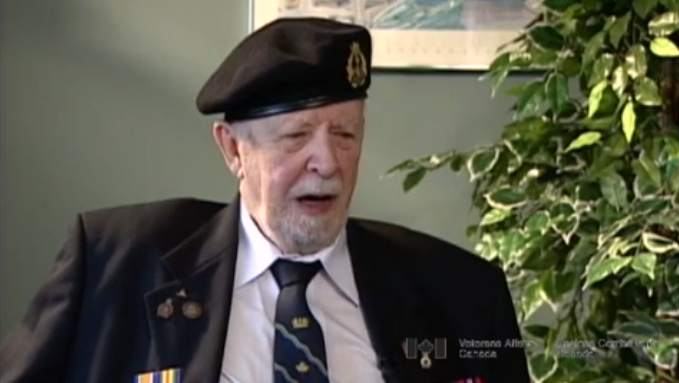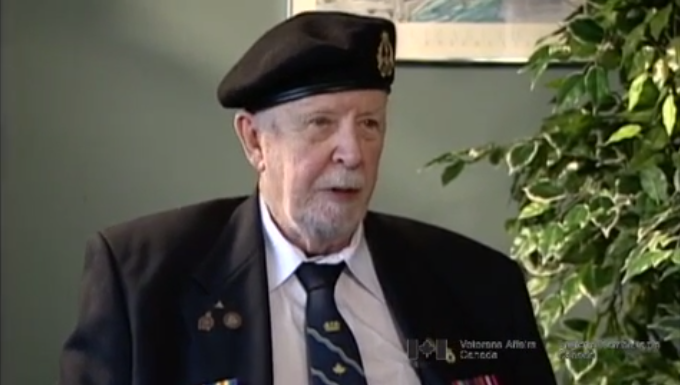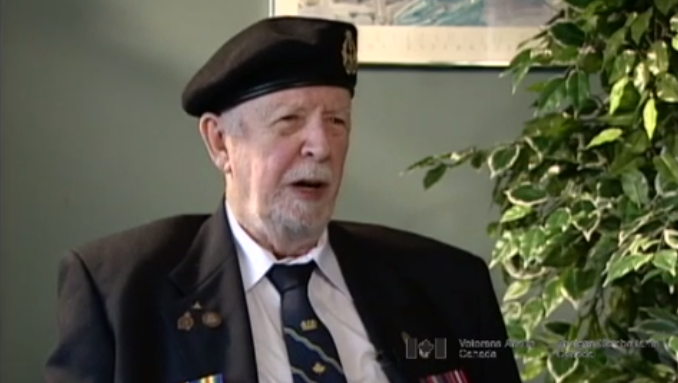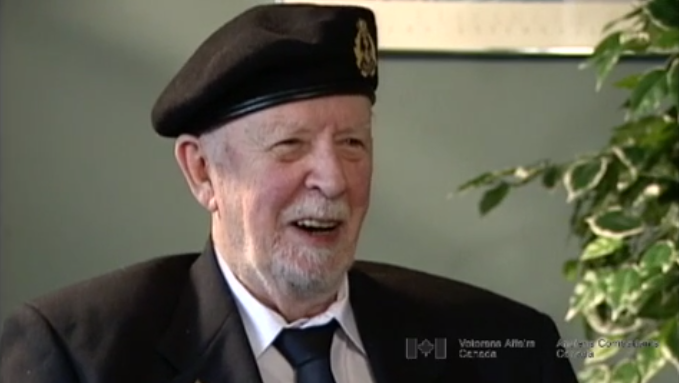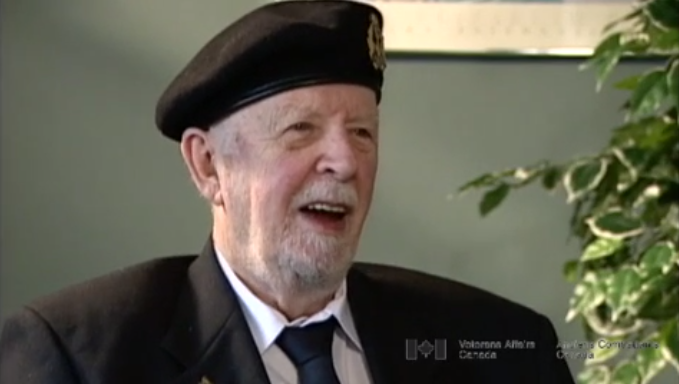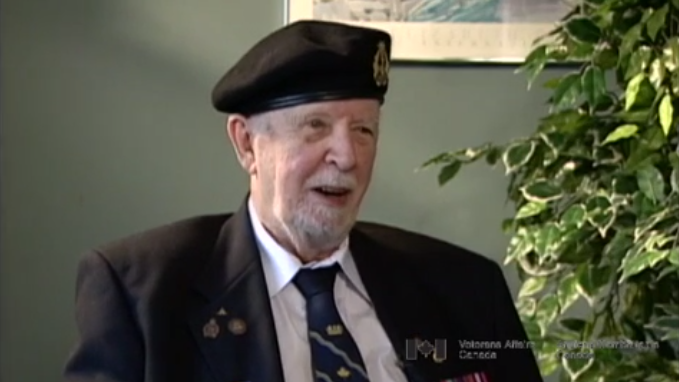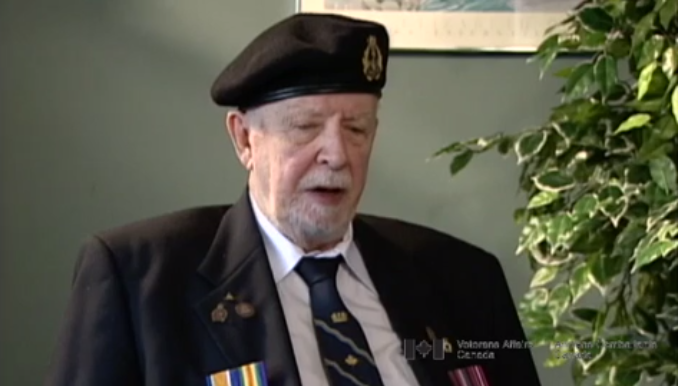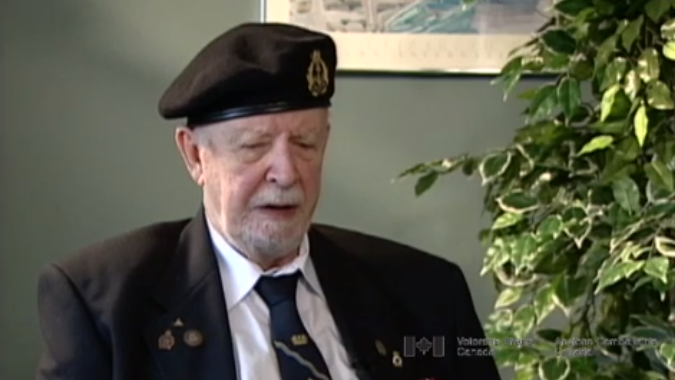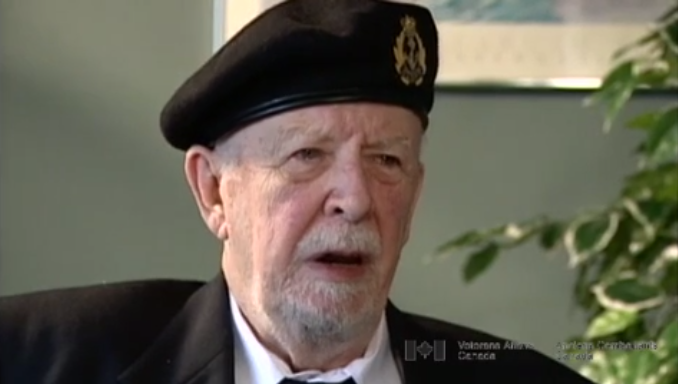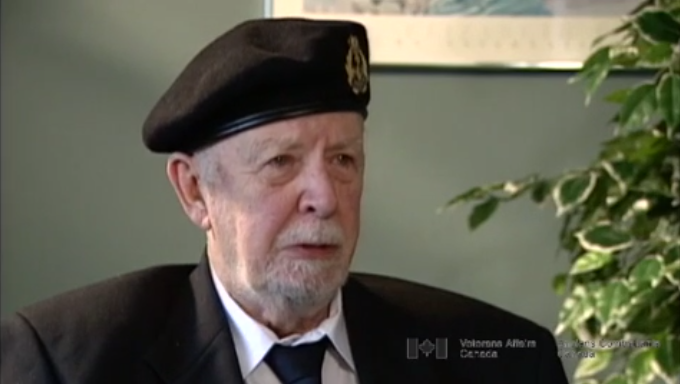Layout of a Convoy
Heroes Remember
Layout of a Convoy
Transcript
Description
Mr. Irwin gives a detailed description of the layout and protection of a convoy.
Robert Irwin
Mr. Irwin was born in Toronto, Ontario on April 9, 1921. He lost his father in a car accident while a boy. Because his mother had to work, he and his brother were taken under the wing of the local YMCA, where they both became excellent competitive swimmers. Once old enough, Mr. Irwin worked on the lake boats on Lake Superior. Shortly before enlisting, he also worked for General Electric, where he was promised a job upon his return from active service. Mr. Irwin trained as a wireless operator and, after doing shore duty in the Halifax communications centre, joined the frigate HMCS Prince Rupert, which was assigned to convoy duty. Mr. Irwin spent his entire time at sea aboard this vessel. Notable events during his duty include a possible sub kill off Ireland and the rescue of survivors from a torpedoed British warship in the same action. After leaving the service, General Electric made good on its promise, and Mr. Irwin pursued a 40 year career with them. He now resides in London, Ontario.
Meta Data
- Medium:
- Video
- Owner:
- Veterans Affairs Canada
- Duration:
- 2:13
- Person Interviewed:
- Robert Irwin
- War, Conflict or Mission:
- Second World War
- Location/Theatre:
- North Atlantic Ocean
- Branch:
- Navy
- Units/Ship:
- HMCS Prince Rupert
- Rank:
- Seaman
- Occupation:
- Wireless Operator
Related Videos
- Date modified:



